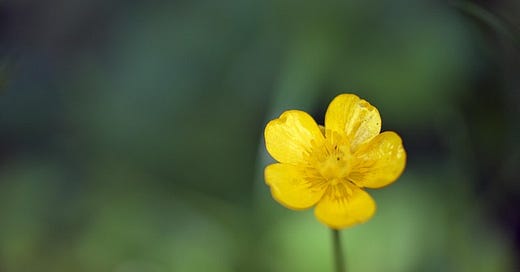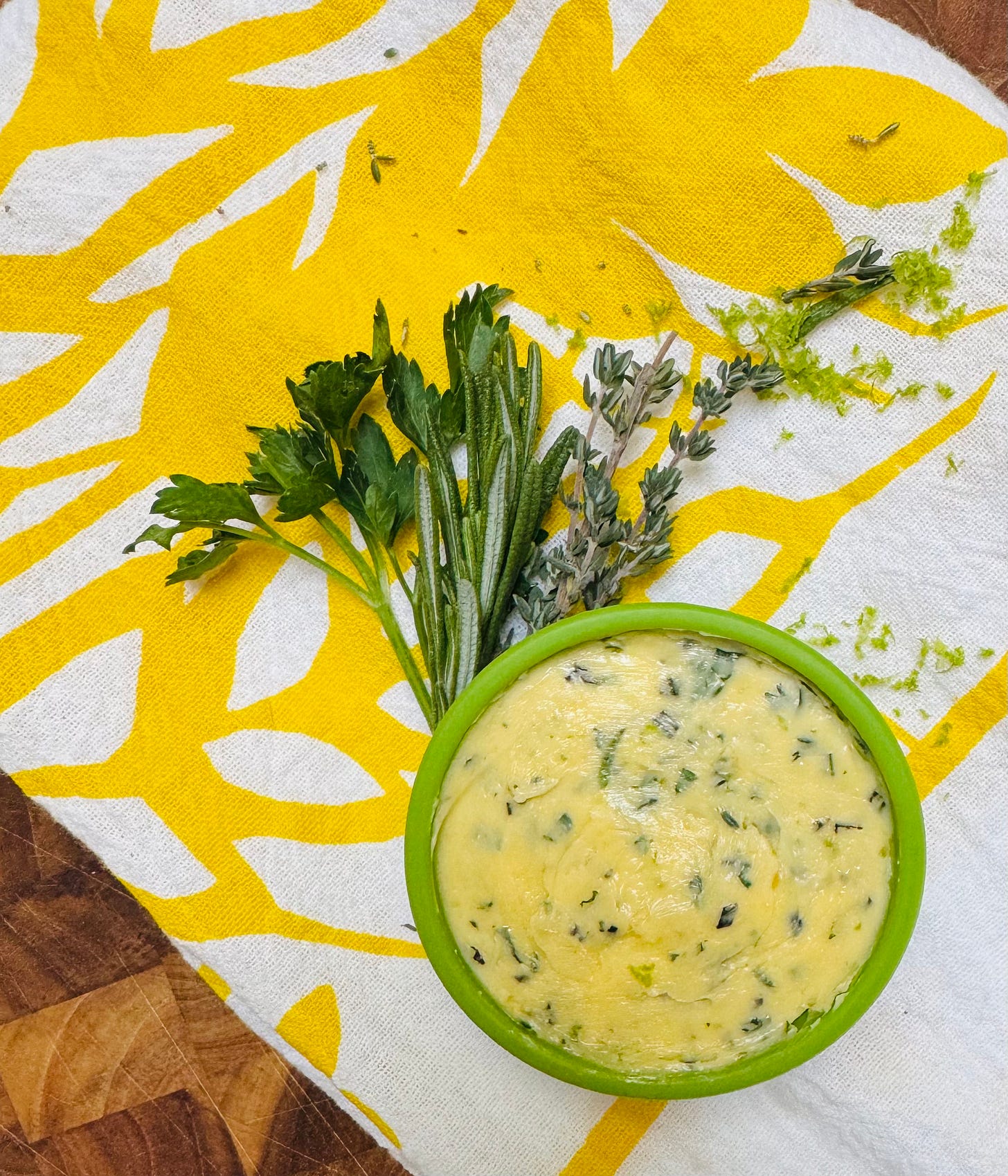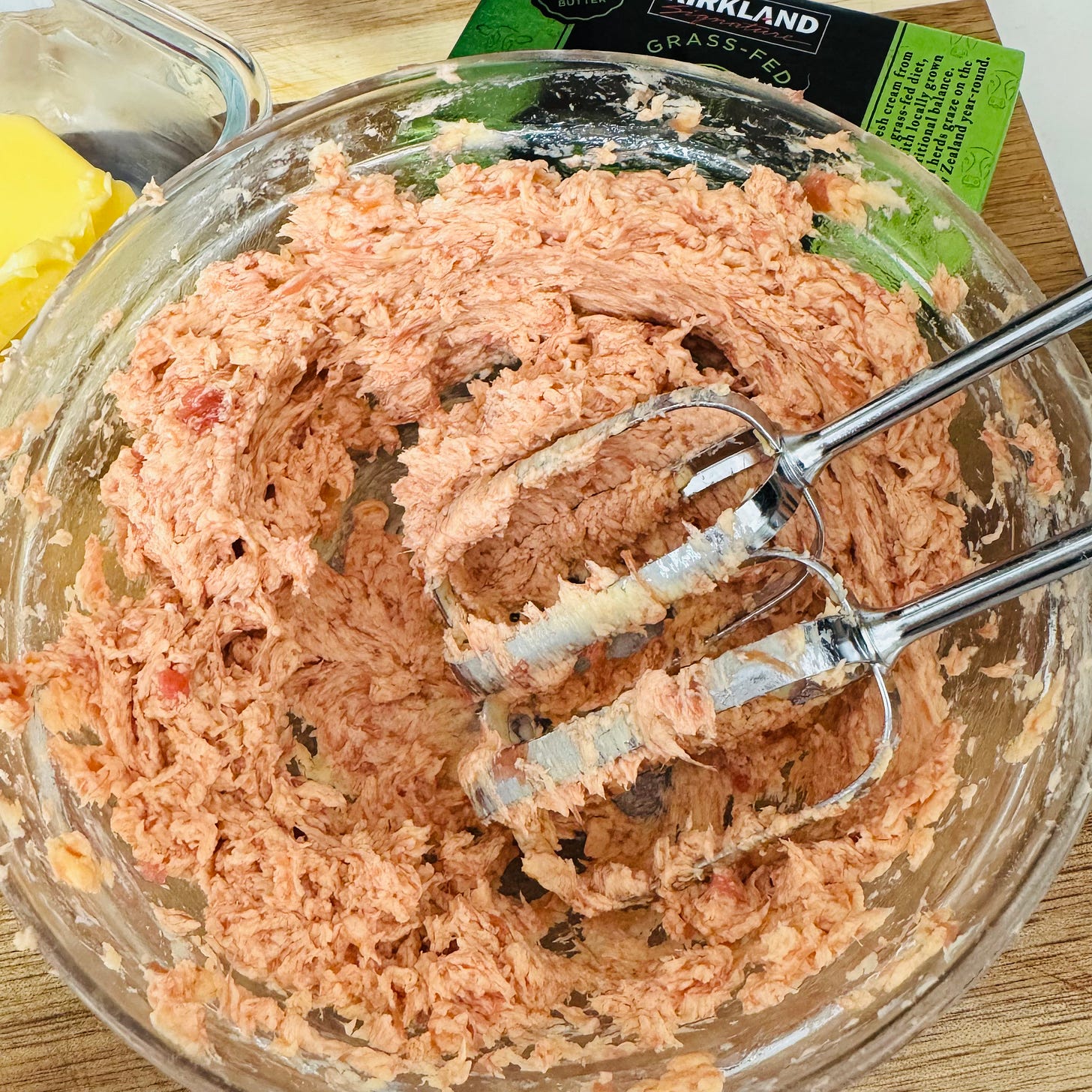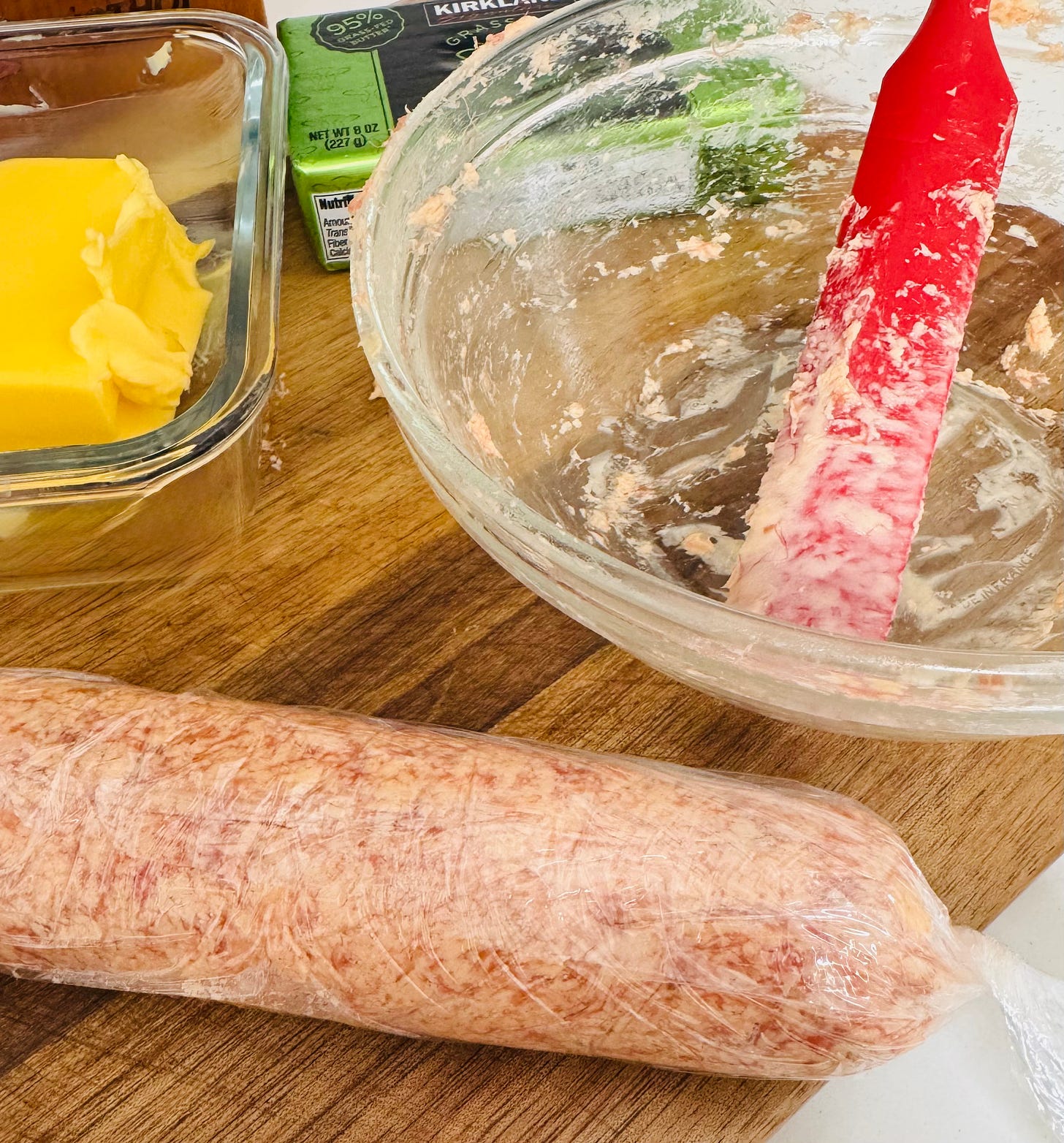COMPOUND INTEREST
This week's focus is compound butter. I was inspired by a recent dinner out where red chile butter accompanied our bread board. Everything is better with butter, compound butter to be exact.

Greetings breakfast eaters. Have no fear. This week’s post has nothing to do with finances. There is no universe in which anyone should take financial advice from me. But compound interest and compound butter definitely have some overlap.
Let me explain.
I know you’ve heard of compound interest. That’s where interest is earned on interest. According to Business Insider, compound interest is “the interest on savings calculated on both the initial principal invested and the accumulated interest from previous periods.”
The chart below, from the good folks at Basic-Mathematics.com, illustrates the difference between simple interest and compound interest. Compound interest earns a higher yield because it is based on the principal compounded by the previously accumulated interest.
I know, I know. Math.
Compound butter is butter that has softened to room temperature before other ingredients are added to change or enhance the butter’s flavor. The butter takes on the flavor of whatever herbs or fruit or other flavorings you’ve chosen to incorporate.
Math is not my strong suit.
Hang in there with me for a minute while I try to span the distance between the culinary and financial worlds.
In case you’re new to BFB you may have already (and astutely) guessed that I view the world through the lens of food and cooking. If history and math and science had been taught with a nod and a wink towards food, those school subjects might have held more interest for me.
Using the math example as a guide, our values for compound butter might look something like this where:
A = p (1 + r) t
P = principal amount of butter
T = time necessary to make and store the butter
R = interest rate, here measured in tastebud receptors.
As you can see, p is equal to the number 4 since this equation is based on using 4 ounces of butter. I’ve also ascribed 10,000 as the interest rate or r value. This is based on the fact that we have roughly 10,000 tastebuds on our tongue.
The resulting equation is below
4 (1+ 10,000) t
Adding ingredients to butter, which already has a high r-value thanks to its fat content, means that compound butter is exponentially more flavorful than plain old room temperature butter. Compound butter earns interest because of the addition of flavorful ingredients. Compound butter will taste like whatever you’ve chosen to add to it.
So in our mathematical comparison, simple interest correlates to room temperature butter while compound interest correlates to compound butter because of the added flavors.
Probably the most versatile compound butter is made by adding a mixture of finely chopped fresh herbs to softened butter. One of my favorite herbs is tarragon. Its sweet anise flavor pairs so well with fish and chicken and is essential for Bearnaise sauce. But maybe you’re not a tarragon fan. No problem. Just use whatever herb or herb combo that suits you.
You might fancy a three ingredient choice like rosemary, thyme and chive. Here’s a small bit of an herb butter I made with thyme, rosemary, parsley, and lime zest.
But compound butter can also be sweet and fruity.
I decided to try making a rhubarb compound butter to spread on strawberry muffins. Muffins are one of my favorite morning (or anytime) treats and since I had a bag of sliced, frozen rhubarb on hand I got down to the business of making compound rhubarb butter.
The rhubarb needed to be cooked first, so I put it in a small saucepan with ¼ cup of packed brown sugar, the zest and juice of an orange, stirred everything together and let it come to a low boil. Then I turned the heat to let the rhubarb simmer gently for about thirty minutes. After it cooled, I added it to 4 ounces of softened, room temperature butter, and mixed it up.
You can mix it with a large spoon or spatula, but I found it easier to use a hand mixer. Once the butter and cooked rhubarb were well mixed, I formed the butter into a log, encased it in a length of plastic wrap, twisting the ends to fully seal it.
The strawberry muffin recipe is one I tweaked from Danika Vanderpyl who writes a blog called Beside the Mountain. It’s a good recipe and comes together easily. The night before I made the muffins, I measured out the dry ingredients into a bowl. In the morning I mixed up the wet ingredients while the oven pre-heated and in no time I was enjoying a fresh muffin with a cup of coffee. You can find the recipe at the end of this post.
I hope by now your interest in making compound butter is piqued.
RHUBARB COMPOUND BUTTER
Ingredients:
1 12 oz bag of frozen rhubarb
¼ cup packed brown sugar
Juice and zest of one orange
Butter, at room temperature
Instructions:
Place frozen rhubarb in a small saucepan. Add brown sugar, zest and juice from the orange. Stir to combine. Turn heat to medium until the mixture heats through and you see a bit of bubbling action. Turn the heat down to low and let cook for about 20 minutes, stirring occasionally. Remove from heat and allow to cool completely.
Place a piece of plastic wrap on the counter, about a foot long. Form the butter into a log and roll up the plastic wrap, twisting it at both ends to seal.
Compound butter will last in the refrigerator for one week. If you want you can portion it into smaller amounts and freeze for up to 6 months.
………………………………………….
HERB COMPOUND BUTTER
Fresh herbs are a must here. Do not even attempt with dried herbs. Let your preferences guide your choice of herbs.
4 oz room temperature butter
Use 2 tablespoons of your choice of finely chopped fresh herbs like dill, chives, thyme, tarragon, and parsley.
Add ½ teaspoon of salt
You can also add a teaspoon of finely grated lemon or lime zest
Place soft butter in a small mixing bowl. Add chopped herbs and fold into butter with a silicone spatula or large spoon until thoroughly combined. Butter will look speckled throughout.
Place a piece of plastic wrap, roughly a foot long on the counter. Place butter mixture on plastic wrap and form into a log. Twist ends of plastic wrap to seal.
Herb compound butter will last for one week in the refrigerator or up to 6 months in the freezer.
………………………………………………….
STRAWBERRY MUFFINS
INGREDIENTS:
Dry Ingredients:
1 cup AP white flour
1 cup whole wheat flour
½ cup granulated sugar
2 teaspoons baking powder
½ teaspoon baking soda
½ teaspoon salt
1/4 teaspoon ground nutmeg
1 1/2 cups sliced frozen strawberries
Wet Ingredients:
2 eggs
½ cup oil, coconut or avocado or any mild tasting oil
½ cup plain yogurt
2 tablespoon water
2 teaspoon vanilla extract
1 teaspoon almond extract
Zest and juice of one orange
Instructions:
Preheat the oven to 425 Fahrenheit. Place muffin liners in a muffin pan or grease muffin tin with about 2 tablespoons oil making sure to coat each individual muffin cup thoroughly.
For the dry ingredients:
In a large bowl mix the flour, sugar, sea salt, baking powder and baking soda. Use a whisk to mix everything well.
Strawberries: If your frozen strawberries are not sliced cut them into chunks now using a sharp knife. Add the sliced frozen strawberries to the flour mixture and gently stir them through.
For the wet ingredients:
Melt the butter, let it cool slightly. In a large mixing bowl place the eggs, yogurt, water, vanilla, and butter. Whisk together all the wet ingredients until everything is combined well.
Fold everything together: Add the wet ingredients into the flour/strawberry mixture. Use a spatula or wooden spoon to stir the batter together, about 12-15 folds, just until everything is incorporated. Do not over-stir.
Scoop & bake: Add about ⅓ cup of batter to fill each muffin cup. Place the muffin tin in the preheated oven 8 minutes at 425 F turn to 375 F for 8-10 minutes.
How will you know when the muffins are done? If you have a kitchen thermometer the internal temperature of the muffins should register 200 F. If you don’t have a kitchen thermometer look for the muffins to be golden brown on top and slightly more brown around the edges. Remove muffins from the oven and let cool on a wire rack for about 10 minutes before removing muffins from tin.
Continue to cool on a wire rack until you can safely eat them, spread with the rhubarb butter.









Thanks!! Loved sharing those treats with you…added more flavor for sure 🌞
I am very happy to have been a lucky recipient of both the delicious muffins and the compound butter. Love your analogy here, too: very clever.